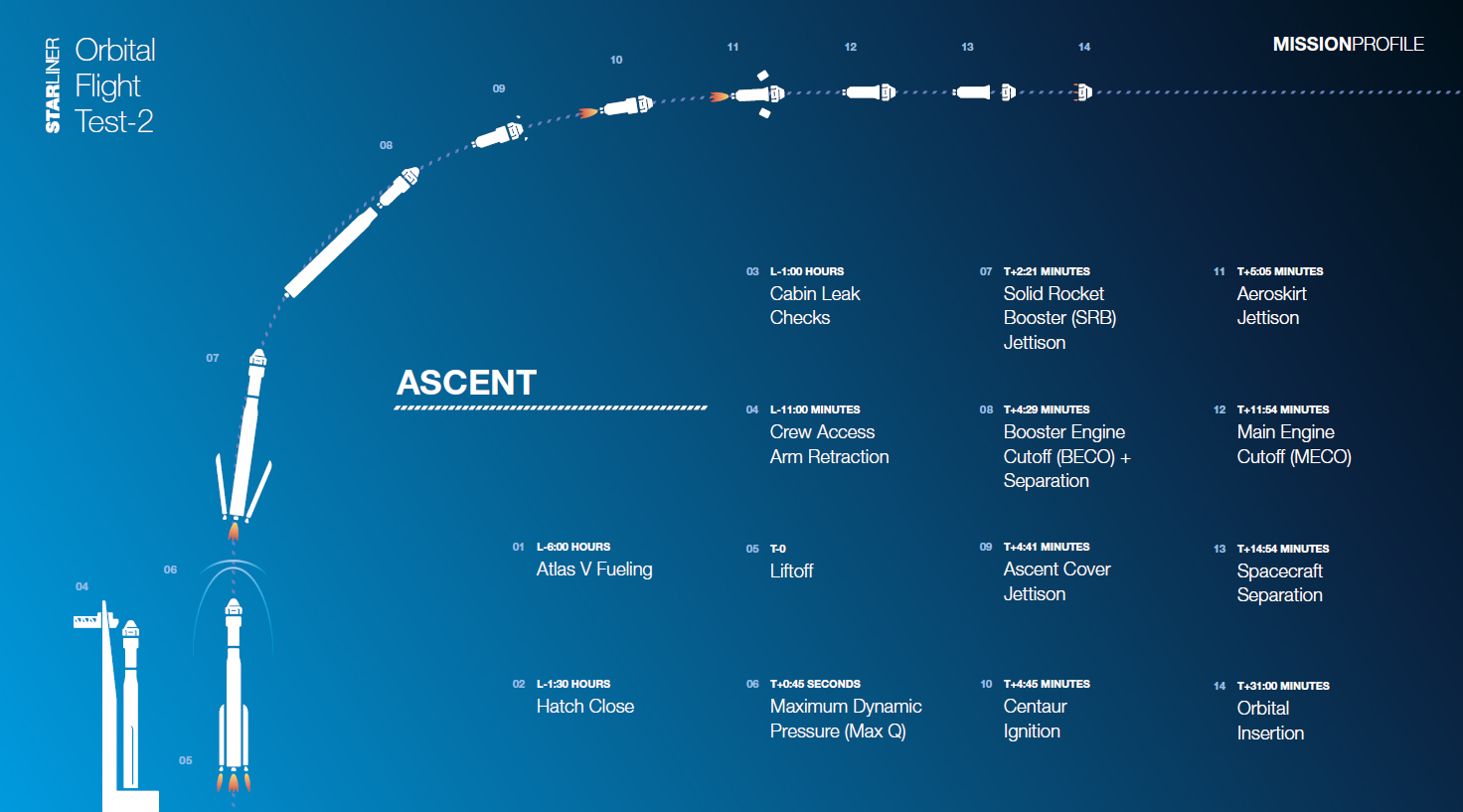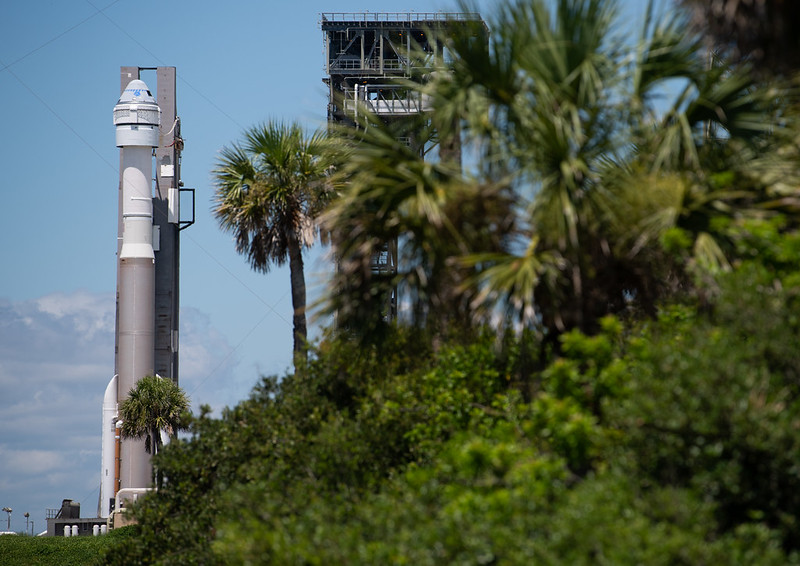Boeing’s Starliner capsule is ready to launch again.
During a flight readiness review Wednesday (May 11), NASA cleared Starliner to launch on Orbital Flight Test-2 (OFT-2), a crucial uncrewed mission to the International Space Station.
The decision keeps the Boeing spacecraft on track to launch on May 19 at 6:54 p.m. EDT (2254 GMT) from Cape Canaveral Space Force Station’s Space Launch Complex 41 in coastal Florida — assuming no weather or technical issues arise.
Should the mission lift off on time, an ISS docking would happen roughly a day later, on May 20. “It’s my birthday, so I’m really looking forward to a great birthday present here next week,” joked Steve Stich, NASA’s Commercial Crew Program manager, of the docking in a teleconference with reporters Wednesday shortly after the review’s conclusion.
A backup launch date is available on May 20 at 6:32 p.m. EDT (2232 GMT), which would still see a birthday event if the timeline is shifted. Stich added, however, that the greater importance is getting Starliner set to carry astronauts.
“The most important step right now is to go fly this orbital flight test,” Stich said.
In photos: Boeing’s Starliner OFT-2 mission in pictures
NASA officials framed the completion of OFT-2 as crucial to launching more crewed missions to the space station in the near future. The agency is seeking to expand the number of astronauts on board the ISS at a time to boost the science potential of the orbiting complex.
Mark Nappi, vice-president and program manager of the Boeing Commercial Crew Program, said his company is “prepared and ready” to assist with NASA’s work; Starliner currently faces no major obstacles in its review items to get set for launch, docking and landing.
“The Boeing team is prepared and ready. The NASA-Boeing partnership is really strong. It’s a reflection of all the hard work that’s been done,” Nappi said during Wednesday’s call.
Starliner’s major task will be to do what the capsule failed to do on the original OFT mission in December 2019: meet up successfully with the ISS to demonstrate new technologies and, overall, showcase a readiness to fly crews to and from space.
Many of these technologies are connected with a sensor that will be active throughout the rendezvous with the ISS, Emily Nelson, deputy chief flight director at NASA, said during the press conference.
“One of the most important — and really kind of the coolest — sensor that they’ve got on their spacecraft is called VESTA; it looks for the silhouette of the space station,” she said.
VESTA, short for “Vision-based Electro-optical Sensor Tracking Assembly,” will be assessed for its ability to identify the space station and to dock at the correct (forward) port on the Harmony module.
“We’ll do a couple of demonstrations, once we get close in, where the spacecraft will stop,” Nelson said, emphasizing that the goal is to make sure the spacecraft will halt when commanded to do that. Once that capability is established, “then we’ll press into the final rendezvous and docking.”
Related: Building the International Space Station (photos)

Initially Starliner was set for an OFT-2 launch in August 2021. But during normal preflight checks, engineers found that 13 of the 24 oxidizer valves in the capsule’s propulsion system, located in Starliner’s service module, were stuck.
Diagnosing the problem required rolling Starliner and its United Launch Alliance Atlas V rocket off the pad. A few months later, investigators located the probable cause of the valve issue, which came down to a chemistry issue. The nitrogen tetroxide oxidizer reacted with air moisture, creating nitric acid. Then the nitric acid reacted with the aluminum surrounding the valves, resulting in corrosion products creating difficulties with the valves’ function.
Fixing the valve problem required multiple adjustments, involving sealing a potential problem point for moisture in the electrical connectors, purging moisture using nitrogen gas and adding a new “cycling” routine every two to five days to keep the valves running smoothly. Boeing also replaced Starliner’s service module to get ready for the coming flight.

While every human spaceflight program has its own unique issues and challenges, Stich said the Boeing valve problem brought to his mind a situation during the space shuttle program. During the launch of STS-129 on Nov. 14, 2008, flight controllers saw an abnormal hydrogen flow increase in one of the shuttle Endeavour’s main engines.
Addressing this flow control issue, as the problem was later termed, took months; the issue was eventually traced to a cracked valve arising from the stresses of repeated use. The fix was complex and is now framed as a case study of collaborative problem-solving on NASA’s Academy of Program/Project & Engineering Leadership (APPEL) Knowledge Service.
“We had to go off and do a whole bunch of testing, and then put in some new flow control valves to convince ourselves that we were safe to go fly,” Stich recalled of the shuttle situation. Similarly, looking to Starliner, he said the team has spent eight or nine months investigating and addressing the valve issue.
“It’s just what we find in spaceflight. It’s challenging all the time,” he said. “You find things out about the vehicle that you maybe didn’t know. You go address those technically. You go run the right test. You put the right people and the right teams in place. You go solve the problem. And then when you’re ready, which we are, we go fly.”
Kathy Lueders, NASA’s human spaceflight chief, added that in 30 years of being at the agency, “every development was hard” across all five spacecraft with which she was involved. “You just have to recognize it and do the work,” she said, “and spend the time to make sure that you’re you’re buying down the risks and continue to solve your problems and move forward.”
OFT-2 is Starliner’s second attempt at performing an uncrewed test mission to the ISS. The first try in December 2019 had to be cut short after Starliner experienced numerous software glitches that prevented it from reaching the station.
Boeing, which has a NASA contract to fly astronauts to and from the ISS with Starliner, must achieve an uncrewed test flight to the station before astronauts can climb on board. The company hopes that the first crewed flight on the capsule will happen by the end of 2022. (NASA said Wednesday it is still evaluating how many astronauts will fly on that first crewed flight and will make a decision after OFT-2 completes.)
“This is a really critical time for us, as we’re heading into this and getting ready to once again fly,” Lueders said. “We’ve learned a lot from the initial flight of the demonstration, and then getting ready in the campaign up to the attempt last summer. But now the team has really worked through all that they’ve learned so far and is ready to go.”
SpaceX is the other company NASA selected to fly commercial crew missions. SpaceX recently launched its fourth operational astronaut mission, called Crew-4, and including a crewed demonstration flight to the ISS has been running such missions since mid-2020.
Follow Elizabeth Howell on Twitter @howellspace. Follow us on Twitter @Spacedotcom and on Facebook.

